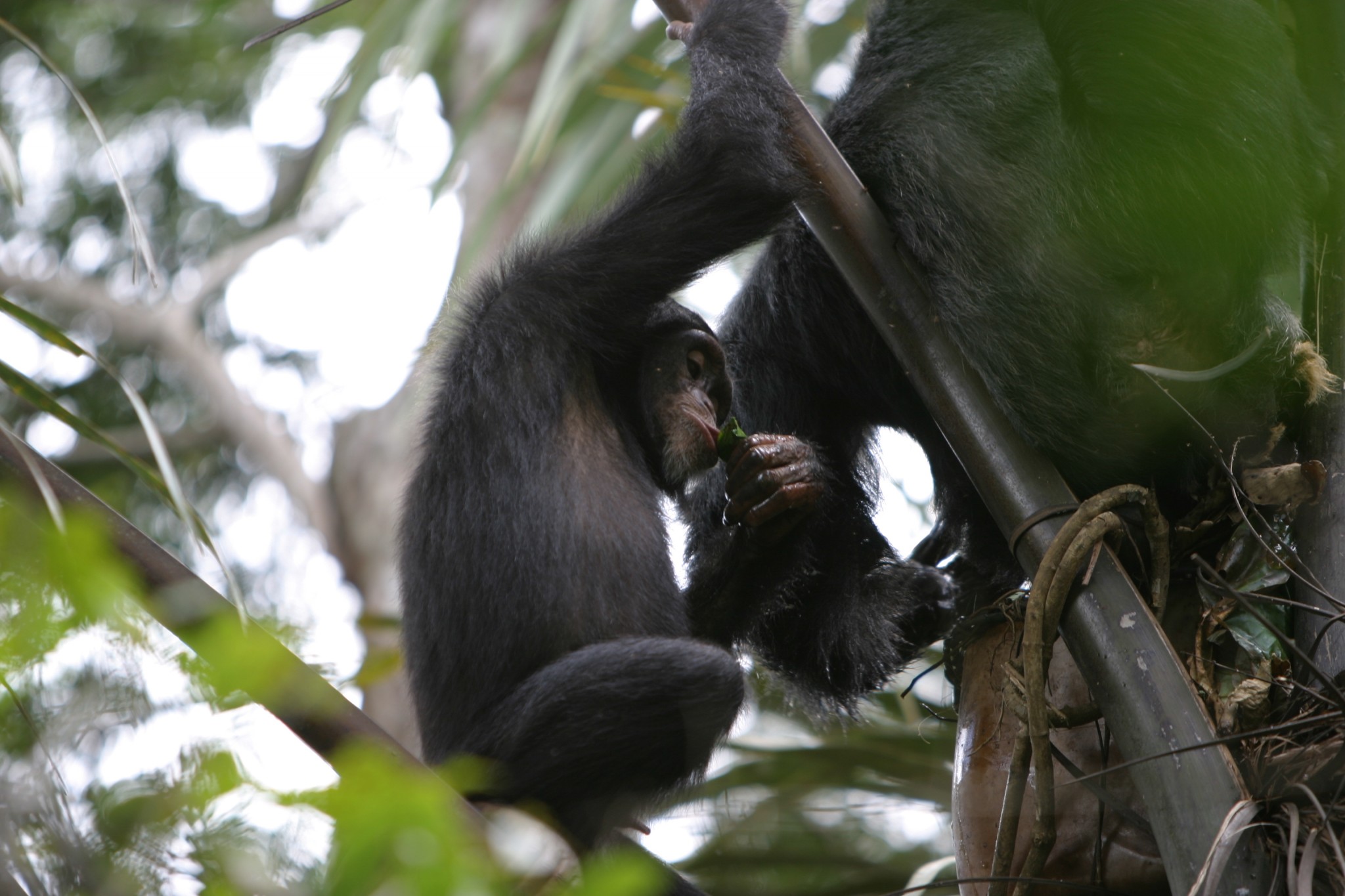The consumption of alcohol by modern-day humans is nearly universal, being found in every society that has fermentable raw materials. However, most anecdotes of wild nonhuman primates ingesting ethanol remain unvalidated. A study published in the journal Royal Society Open Science provides the first empirical evidence of spontaneous and habitual alcohol ingestion among apes in nature, demonstrating there is not a strict aversion to food containing ethanol.
In the Bossou area of Guinea, West Africa, where the research took place, villagers harvest palm wine from the trunks of raffia palms, tapping them at the crown and draining off the sap into plastic containers which then ferments, producing a lightly alcoholic drink. Researchers working at Bossou have witnessed over the years the local chimpanzees climb the trees and help themselves to a tipple, using folded leaves as drinking tools: a single or several leaves are folded in the mouth, dunked into the liquid and then sucked before being re-dunked.
This collaborative study led by Dr. Kimberley Hockings from Oxford Brookes University found that the samples of palm wine consumed varied in strength from 3% to 7% alcohol by volume, the latter liable to give quite a kick for a human, let alone an animal half its size. Whilst the research did not focus on the after-effects of drinking, the chimpanzees that imbibed substantial quantities of alcohol displayed behavioural signs of inebriation, although nothing comparable to wild nights of excess: Hockings and colleagues noted that, in one instance, several chimps finished a session by having a nap.
The study is significant in that it further shows the intelligence of primates in adopting a cordial ritual spread through social transmission. But, more than this, the drinking of alcohol amongst the Bossou chimpanzees supplements recent findings that African apes share with modern humans an enzyme capable of metabolising ethanol, which allows them to exploit fermented foods. For her contribution to the study, Kent’s Dr. Tatyana Humle and her PhD student, Nicola Bryson-Morrison, provided data on several palm drinking sessions they have witnessed and/or video recorded during their field work at Bossou.
The article is available here.
Image courtesy of Gaku Ohashi.

